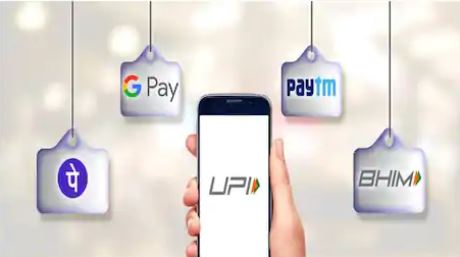RBI issues pre-sanctioned credit lines for UPI users; ICICI and HDFC already had credit lines.
You can now make payments through UPI even if your account lacks sufficient money.The Reserve Bank of India (RBI) has recently given the green light to banks to offer a credit line facility to UPI users, allowing users to spend from a pre-sanctioned credit line and settle the dues later.
Read More: Sugar prices may surge as Maharashtra’s production set to dip to 4-year low
Introducing UPI Pay Later: A New UPI Innovation
The RBI has paved the way for transfers from pre-sanctioned credit lines at banks via the UPI network. According to a notification from the RBI on September 4, 2023, “Under this facility, payments through a pre-sanctioned credit line issued by a scheduled commercial bank to individuals, with the prior consent of the individual customer, are enabled for transactions using the UPI system.” This development empowers you to link these credit lines issued by banks to your UPI account, facilitating seamless payments.
How UPI Pay Later Benefits Users
Until now, UPI users could only link their savings accounts, overdraft accounts, prepaid wallets, and credit cards to the UPI system. However, this recent innovation allows you to harness your pre-approved credit line to conduct UPI transactions.
Read More: Amid India Vs Bharat, Blue Dart Rebrands Its Premium Service As ‘Bharat Dart’
Understanding Pre-Approved Credit Lines for UPI Users
A pre-approved credit line essentially functions as an overdraft facility provided by banks. You can utilize this facility through UPI applications like Google Pay, Paytm, MobiKwik, and various mobile banking UPI applications as per individual bank policies. Initially, the bank seeks your consent to establish a credit line with a predefined limit. Once approved, you can spend the sanctioned amount via your UPI app and settle your dues by the due date. While some banks levy interest on the amount utilized from the credit line, others offer a credit-free period, meaning no interest accumulates if you repay within a specified timeframe. This latter option bears a resemblance to the “buy now and pay later” (BNPL) concept.
Interest Rates and Charges for UPI Pay Later
Fees for using a pre-sanctioned credit limit on UPI vary among banks. For example, HDFC Bank charges interest on the amount spent from the credit line, while ICICI Bank imposes a service charge above a particular threshold.
For HDFC Bank customers, a credit limit of up to Rs 50,000 is available with a maximum credit period of six months. Suppose you spend Rs 5,000 from your credit line for 10 days. In this scenario, HDFC Bank calculates simple interest on the borrowed amount for the number of days it is used. The interest is only calculated on the Rs 5,000 for the 10 days. This interest is debited from your pay-later account on the last day of each month. You are required to settle the entire amount, including both the credit line usage and accrued interest, at the end of each month. If the interest remains unpaid within three days of the deadline (grace period), the bank deducts it from your primary account (savings/current).
ICICI Bank offers instant digital credit for up to 45 days, allowing you to pay bills, shop online, and make payments to any merchant UPI ID instantly. At the end of the credit cycle, the dues are automatically debited from your ICICI Bank savings account. While there is no interest rate, a service charge of Rs 75 and taxes are applied for every Rs 3,000 spent from your ICICI Bank PayLater account in a month.
Read More: US largest source of India’s foreign direct investment in FY23: RBI data
Distinguishing UPI Credit Lines from Credit Cards on UPI
While a UPI credit line resembles credit cards on UPI, there is a subtle difference. Abhishek Kumar, a SEBI registered investment advisor (RIA) and Founder of SahajMoney, explains that obtaining a credit card often entails extensive documentation, excluding a significant portion of the population without formal income records from accessing credit. Pre-approved credit lines are more accessible to UPI users, as banks require basic personal account verification before providing them with a credit line for UPI. This accessibility benefits small borrowers and business people who can utilize this facility to manage their working capital needs.
This approach enables them to avoid taking working capital loans from moneylenders at exorbitant rates, opting instead for lower interest rates on credit lines.
Krishnan Vishwanathan, Co-founder and Executive Director at RING, highlights that this system differs from credit cards in terms of the user segment it serves. Most banks in India issue credit cards to salaried individuals, whereas limit-based credit on UPI has the potential to significantly broaden the user base.
Currently, only RuPay credit cards are accepted on UPI platforms. This new feature levels the playing field by equating funding accounts linked to UPI with credit cards, offering users more flexibility.
Traditionally, the “buy now, pay later” (BNPL) sector has been dominated by fintechs and non-banking financial companies (NBFCs). However, this development presents an opportunity for banks to venture into this domain, providing users with additional financial flexibility and convenience.





































